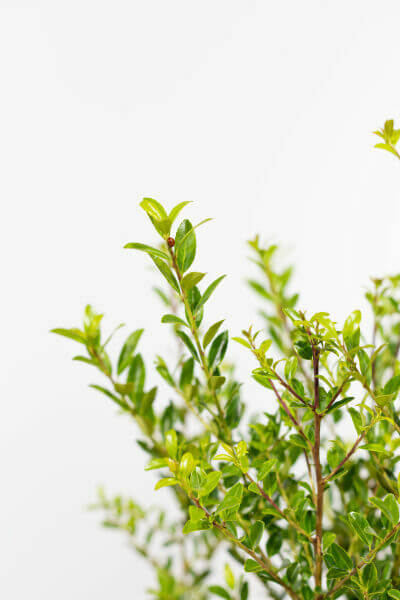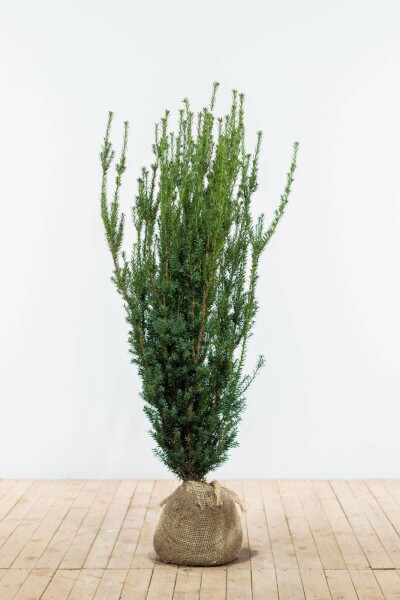Hedge Plants For Creating Boundaries
Hedge Plants For Creating Boundaries
Blog Article
Hedge Plants For Recreational Areas
Enhance your garden's allure with rich hedge varieties such as Yew (Taxus), Thuja, Laurel, Photinia, and Bamboo, celebrated for their structural stability and environmental advantages.
Yew and Thuja offer evergreen protection and winter season strength, while Laurel uses quick development and broad, aromatic leaves.
Photinia adds seasonal charm with its vibrant red foliage, and Bamboo lends a low-maintenance, serene atmosphere.
These hedges enhance air quality, lower sound, and develop tranquil, personal areas.
Appropriate planting, spacing, and maintenance ensure energetic development and environmental harmony.
Check out how these rich varieties can raise your garden's charm and wellness.
Key Takeaways
Transform Your Garden With Lush Hedge Ranges
- Select Yew for its thick, evergreen development and unrivaled durability.
- Go with Laurel for its fast growth and broad leaves, guaranteeing fast privacy.
- Pick Photinia for its lively seasonal foliage, which turns a striking dark red.
- Utilize Bamboo for a low-maintenance, winter-hardy hedge with aesthetic appeal.
- Space plants 2-3 per meter and prune routinely for optimal growth and health.
Popular Hedge Plants
When transforming a garden with rich hedge ranges, it's important to think about popular hedge plants such as Yew, Thuja, Laurel, and Photinia due to their special characteristics and benefits.
Yew (Taxus) is highly respected for its durability and thick, green development, making it a prime choice for withstanding landscapes.
Thuja is kept in mind for its evergreen foliage and robust winter season durability.
Photinia adds seasonal vibrancy with red leaves that darken over time, creating dynamic visual appeal.
Laurel uses quick development and fragrant, broad leaves, perfect for fast privacy.
Furthermore, Bamboo is an excellent option for atmosphere, using a low-maintenance, winter-hardy choice that improves the garden's aesthetic with its elegant, swaying walking canes.
These selections deal with a range of horticultural needs and preferences.
Benefits of Garden Hedges
Garden hedges provide a wide variety of advantages, making them an important addition to any landscape. These natural barriers are affordable to carry out and supply substantial wind protection, enhancing air circulation and adding to sound decrease. The dense foliage of hedges like Thuja and Beech ensures personal privacy by obstructing visibility, developing a tranquil and remote environment.
Hedges likewise play an important role in microclimate regulation, supplying a steady environment that cultivates plant development and reduces temperature level changes. Their intricate leaf structures filter contaminants, improving air quality and adding to a much healthier garden community.
Additionally, hedges master sound decrease, absorbing and deflecting acoustic waves to lower ambient sound levels. This dual performance of providing both acoustic and visual privacy improves the total tranquility and visual appeal of any garden.
Planting and Upkeep Tips
For a successful hedge, meticulous preparation of the planting area is vital. Ensure the soil has appropriate pH and drain to support strong root development.
Space the plants properly for the chosen species. Water the hedge often throughout its preliminary growth phase, changing as required with seasonal modifications.
Implement a methodical insect control and illness avoidance strategy, using organic or chemical treatments when essential. Regularly inspect for aphids, mites, and fungal infections.
Apply mulch to keep wetness and reduce weeds. Seasonal pruning promotes thick development and air circulation, essential for plant health.
Following these guidelines will help you cultivate a dynamic, properly maintained hedge that boosts the appeal of your garden.
Spacing and Trimming Guidelines
Spacing and Trimming Guidelines
Proper spacing and trimming are crucial for cultivating healthy, visually appealing hedges. Adequate spacing ensures each plant gets enough nutrients, light, and air flow.
Follow these standards for optimum hedge upkeep:
- Spacing: Position hedge plants 2-3 plants per meter to motivate robust development.
- Pruning Methods: Regular pruning is important for maintaining desired hedge height and shape. Trim brand-new development in summertime and cut back older wood throughout winter season.
- Seasonal Care: Change cutting approaches and schedules according to seasonal requirements to guarantee plant health.
- Hedge Height: Routinely screen and trim to maintain the wanted hedge height and attain uniform visual appeals.
Abiding by these actions will ensure your hedge thrives, boosting both the appeal and performance of your garden.
Choosing the Right Hedge
Picking the Right Hedge
Choosing the suitable hedge involves examining elements such as fully grown height, foliage density, and ecological resilience. Effective hedge plant selection requires comprehending each species' development qualities and site-specific adaptability.
For instance, Yew (Taxus) offers exceptional longevity and thick growth, while Thuja is significant for its winter strength. Furthermore, considering upkeep requirements is crucial; fast-growing types like Laurel or Privet need regular trimming, whereas low-maintenance options like Bamboo or Ivy might be more effective for those looking for very little upkeep.
Ecological elements such as soil type, light schedule, and moisture conditions need to also assist the selection process. This mindful method makes sure the chosen hedges will grow, providing both visual and functional advantages to the garden landscape.
Delivery and Planting Recommendations
To ensure your hedge plants flourish, they must be provided by specialized couriers and planted immediately upon arrival.
Follow these necessary steps for successful planting:
- Soil Preparation: Improve the soil with natural matter to improve drainage and nutrient content.
- Planting Depth: Develop a trench two times the width and equal to the depth of the root ball.
- Watering Techniques: Water thoroughly after planting, keeping the soil regularly wet however not saturated.
- Mulching: Apply a layer of mulch to keep wetness and reduce weeds.
Consumer Assistance and Service
Offered the crucial role of timely support in horticultural pursuits, our client assistance group is readily available 6 days a week through telephone, e-mail, and social networks to use skilled advice and swiftly address any concerns. Their dedication to quick response times ensures customer satisfaction by dealing with queries related to plant health, optimal planting methods, and upkeep schedules.

-------------------
6 days a week
Within two days
Within 24 hours
This extensive support group, reinforced by an excellent 9.3/ 10 client rating, highlights our dedication to enhancing the gardening experience for every single customer.
Frequently Asked Concerns
How Long Does It Consider Hedge Plants to Establish?
Hedge plants usually require one to 3 years to become totally established, with the precise period varying by types and growing conditions.
Reliable care during this vital duration is essential for robust growth. Constant watering, vigilant weed control, and suitable fertilizer application are critical in promoting strong root advancement.
For example, fast-growing species like Laurel might develop quicker, while slower-growing varieties such as Yew may take longer. Thorough maintenance accelerates the establishment procedure, leading to healthy and dense hedges.
What Are the Best Hedge Plants for Privacy?
The concern of the finest hedge plants for personal privacy includes evaluating evergreen and deciduous choices.
Evergreen hedges like Thuja, Laurel, and Cypress offer year-round protection, making sure constant personal privacy.
On the other hand, deciduous hedges such as Beech offer seasonal privacy, shedding leaves in colder months.
Key maintenance suggestions for privacy hedges include regular trimming, fertilizing in spring, and appropriate spacing-- usually 2 to 3 plants per meter.
In addition, constant watering and persistent weed elimination are important for promoting healthy, thick growth.
Can Hedge Plants Draw In Wildlife to My Garden?
Yes, hedge plants can bring in wildlife to your garden by supplying essential advantages like shelter, food, and nesting websites, thus boosting regional biodiversity. For instance, yew, holly, and laurel are exceptional for drawing in birds, while ivy supports a variety of bugs.
However, it is necessary to note that there are some drawbacks, such as increased maintenance to handle insects and routine upkeep. Thoroughly selecting and preserving hedge varieties can help stabilize these drawbacks and advantages, eventually promoting a dynamic and sustainable environment in your garden.
Are There Any Blooming Hedge Plants Available?
Yes, there are flowering hedge plants offered that can boost the beauty of your garden.
For example, Elaeagnus, likewise known as Olive Willow, produces fragrant white flowers in the fall, including a touch of sophistication.
Photinia, another popular choice, showcases dynamic red leaves that develop into an abundant green, creating a dynamic visual impact throughout the seasons.
To make sure these plants thrive, it's important to practice appropriate pruning strategies and seasonal upkeep, such as trimming new growth in the summertime and cutting down in the winter season.
These measures will help maintain the health and aesthetic appeal of your flowering hedges.
How Do I Prevent Insects in My Hedge Plants?
To prevent insects in hedge plants, utilize natural insect control techniques and preserve correct hedge care. Present helpful pests like ladybugs, which prey on harmful pests, to create a balanced ecosystem.
Regularly check your hedges for indications of problem and quickly remove any affected parts to avoid the spread. Make sure the health of your hedges by using well balanced fertilizers and offering adequate water.
Utilize mulching to maintain soil wetness and appropriate spacing to minimize plant stress and promote robust growth. These practices jointly assist in lessening insect issues and keeping a healthy hedge.
Conclusion
In essence, picking the best hedge varieties such as Yew, Thuja, and Laurel can change any garden into a relaxing haven. These plants provide year-round plant, improve aesthetic appeal, and deal useful benefits like sound decrease and wind protection.
Correct planting methods, accurate spacing, constant watering, and seasonal trimming are vital for optimum growth.
Trustworthy delivery services and skilled client support guarantee a seamless experience from purchase to planting, making it easier than ever to elevate your outside space.
Garden hedges use a wide variety of benefits, making them an important addition Article source to any landscape. These natural barriers are affordable to carry out and provide substantial wind protection, boosting air circulation and contributing to sound reduction. The thick foliage of hedges like Thuja and Beech makes sure privacy by blocking visibility, developing a serene and secluded environment.

Pruning Techniques: Regular pruning is necessary for keeping preferred hedge height and shape. Trim new growth in summer season and cut back older wood throughout winter.
Report this page